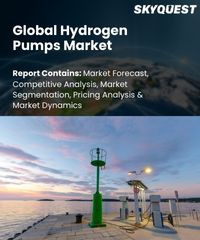
Product ID: SQMIG10B2063

Report ID:
SQMIG10B2063 |
Region:
Global |
Published Date: February, 2024
Pages:
157
|
Tables:
61 |
Figures:
80
Hydrogen Pumps Market Drivers
Increased demand for zero-emission vehicles
Government support and initiatives
Hydrogen Pumps Market Restraints
Limited hydrogen supply
Our industry expert will work with you to provide you with customized data in a short amount of time.
REQUEST FREE CUSTOMIZATIONWant to customize this report? This report can be personalized according to your needs. Our analysts and industry experts will work directly with you to understand your requirements and provide you with customized data in a short amount of time. We offer $1000 worth of FREE customization at the time of purchase.

Product ID: SQMIG10B2063